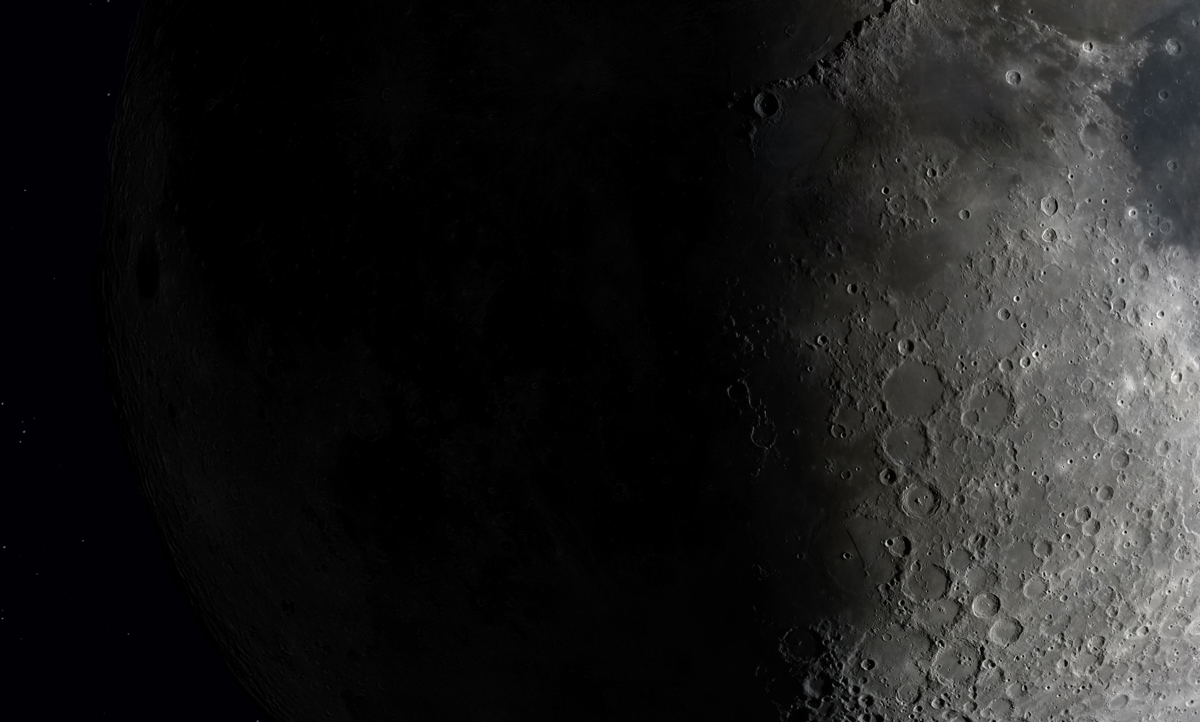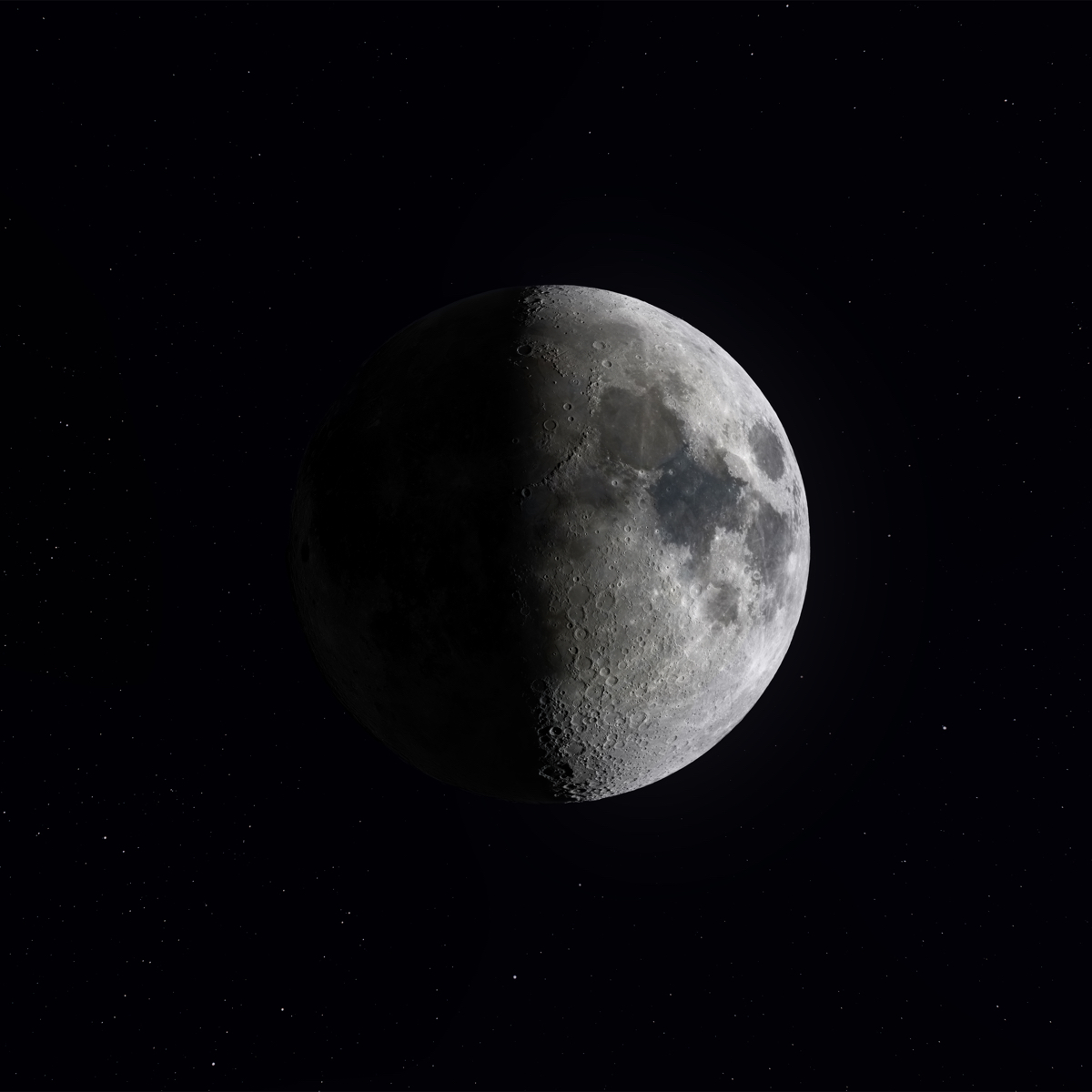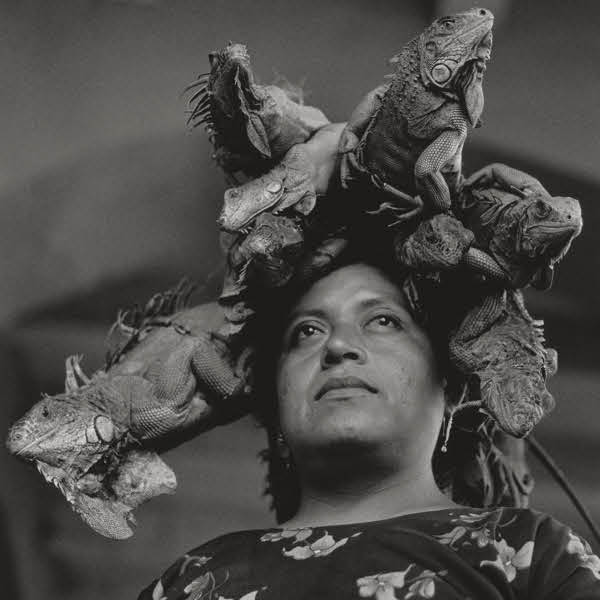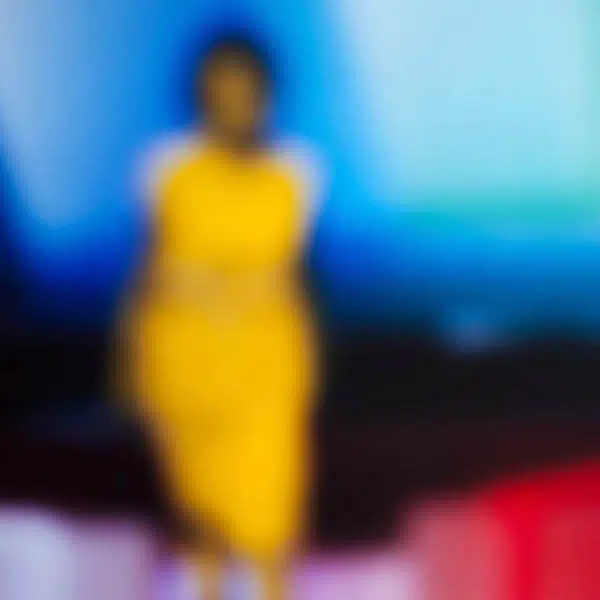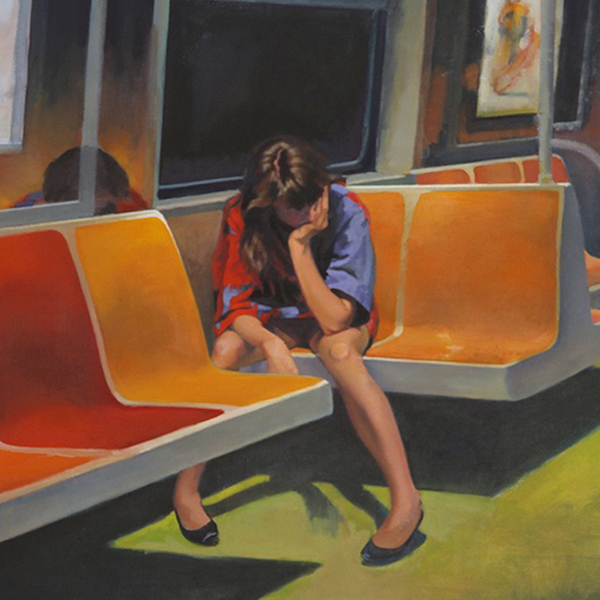Astrophotographer Andrew McCarthy has been dazzling us with his high-quality images of the moon and planets taken from his backyard. His meticulous attention to detail and unending patience mean that he's able to construct extremely high-resolution photographs that allow viewers to zoom in and see every nook and cranny of each celestial body's surface.
His latest lunar photograph was shot over the course of 6 hours and took 1 TB of data. The resulting photograph is a 400-megapixel masterpiece that McCarthy invites viewers to look over in detail. The computer usage to process the photo was so heavy that McCarthy actually blew a circuit breaker when saving the master stack of images. Luckily, it didn't set him back too much and he was able to complete the work.
Always generous in sharing his images, McCarthy has made a 38-megabyte JPG, 338-megabyte PNG, and a smaller 100-megapixel version available for download to use as a wallpaper. For other usages, McCarthy invites people to reach out to him directly, and he also sells prints of his work to help fund his passion for astrophotography.
We had a chance to chat with McCarthy about what drives his love for the stars, his advice for budding astrophotographers, and what image he'd like to capture next. Read on for our exclusive interview and view details of McCarthy's recent lunar photograph.
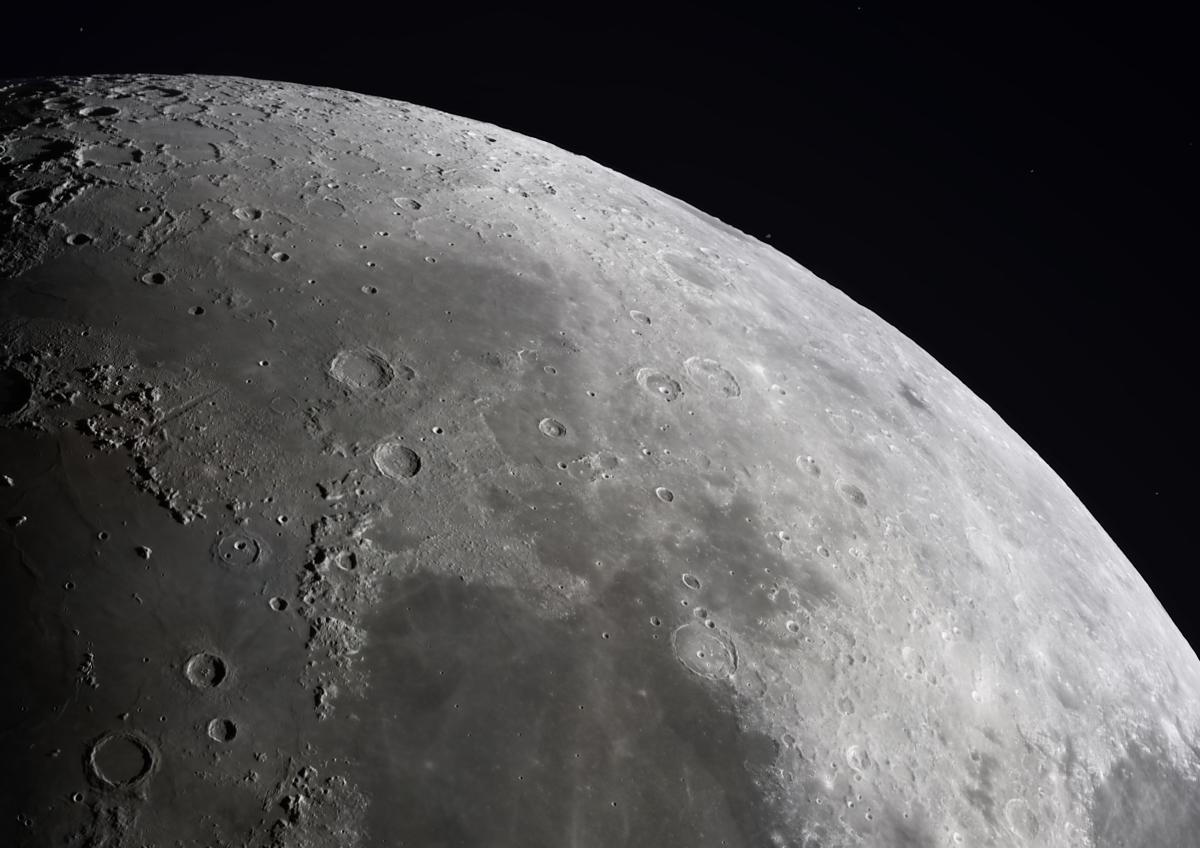
What came first, your love for photography or your love for astronomy?
Astronomy first, definitely. It started when I was a kid looking through my dad's telescope at the planets. I'll never forget the first time seeing Saturn… it was absolutely incredible. I have only lightly dabbled in photography very recently, and only because I was eager to share with people what I was seeing through my telescope.
When did you seriously begin dabbling in astrophotography and what was the initial equipment you used?
It started in early 2017 after I bought my first telescope. I tried taking a photo of the Orion nebula with my phone through the eyepiece and it turned out terrible. Ever since it has been a mission to simply get the best photo possible.
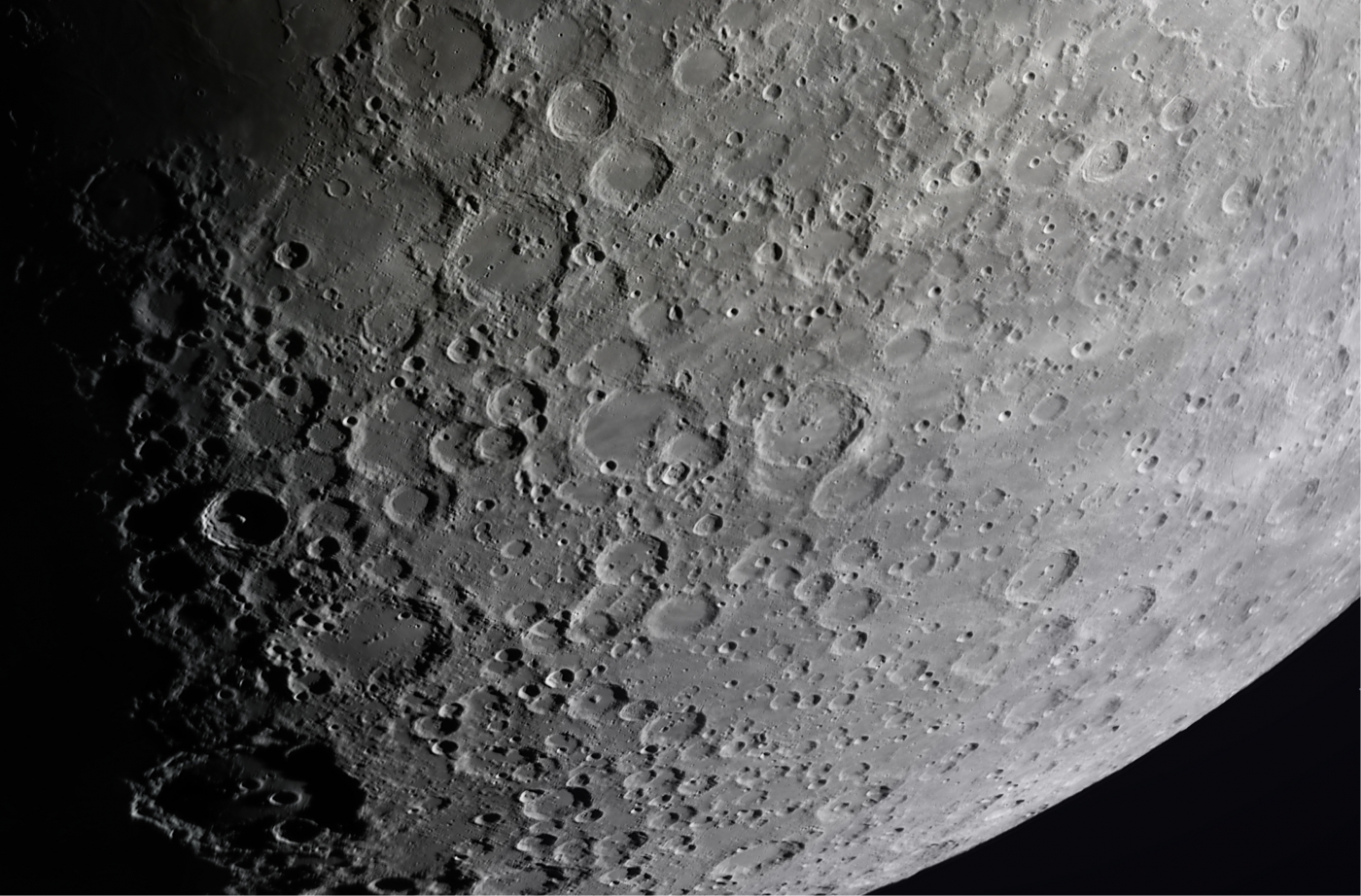
So many people think that they can't take high-quality photos of the planets or celestial bodies without spending a fortune on equipment. What would your advice to those people be?
Don't rule it out. You'd be surprised at the images you could get with $400 worth of equipment, or even less if you buy used. Smartphones are more expensive than entry level equipment.
What type of research and planning goes into these photographs?
Mainly checking the weather. I get a feel for what I want to capture, and when, and I look at a special astronomy weather app. In addition to a standard weather forecast, it provides details about upper atmospheric conditions that are important for astrophotography, such as transparency and atmospheric turbulence.
Knowing wind direction helps me plan for clouds and time my shots accordingly. Once I know I'll be shooting, I collimate my telescope. That consists of shining a laser through the tube and making sure the primary and secondary mirrors are perfectly aligned with the eyepiece. Then I inspect my camera gear and Barlow lens (if applicable) and clean if needed. Then I set up my mount and scope, which requires precise balancing due to the weight of it so as not to introduce strain to the motor. I make sure it is perfectly level, then I align the mount with Polaris, to make sure it is perfectly pointed north to prevent tracking errors.
Then, I focus the telescope using a Bahtinov mask and a bright star, such as Sirius. The Bahtinov mask helps me get a perfect focus, even sharper than my eyes would allow. This is necessary when getting shots as crystal clear as the ones I try and get. Once all those things are done, I'm ready to shoot!
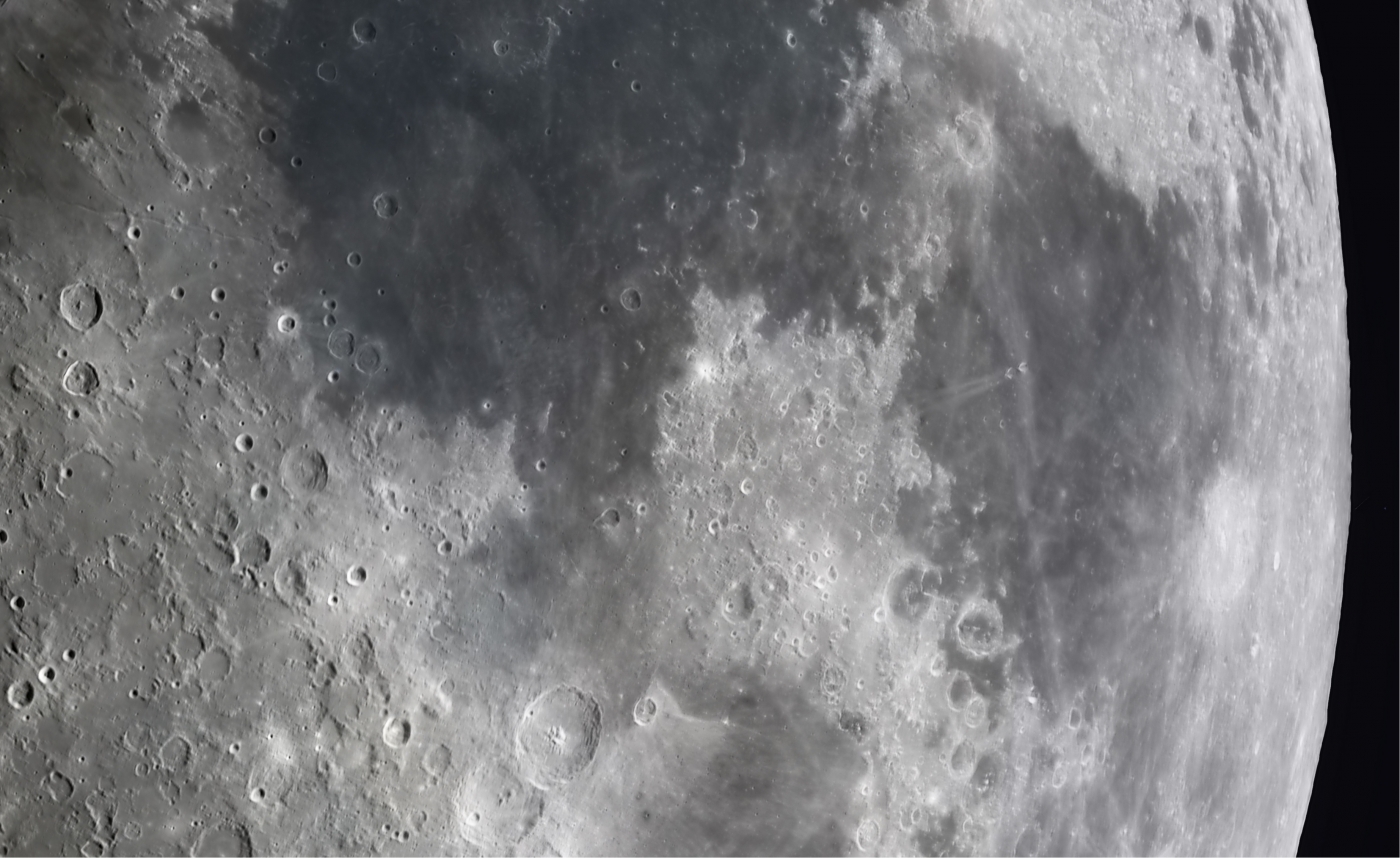
In terms of post-production, what programs are you using and what is your aim with the final result?
I use Pipp, Registax, Autostakkert, and Photoshop. My goal is to reproduce the feeling I get when I look through the eyepiece while getting the best possible image quality. Our eyes see bright objects much better than cameras, due to their dynamic range, so I try and replicate that. Our eyes are bad at seeing things in low light, so when I'm shooting a low-light target, such as a galaxy or nebula, I have different goals in mind.
What is it that keeps you passionate about astrophotography?
I love being able to introduce people to the wonders of our universe. It is absolutely incredible, and the fact that I'm a backyard astronomer makes it a bit more accessible to people. You don't need billions of dollars in equipment to explore the universe. You can do it yourself in your backyard with a basic telescope and a tiny bit of know-how!
What's one shot you are dying to take that you haven't yet gotten the chance to?
Just one? I'd love to get better pictures of our sun. I have a basic white light filter so I can see sunspots, but to image the textures and prominences of the sun requires a dedicated scope that I don't have. One of these days I'll pick one up and start observing during the day!
